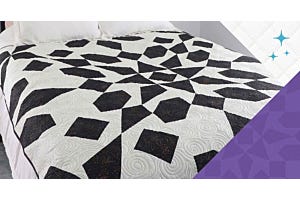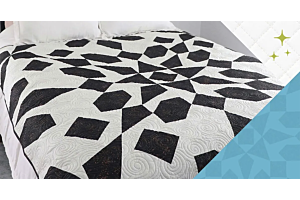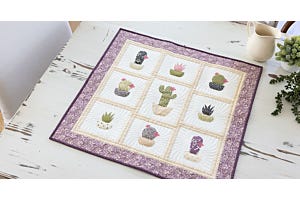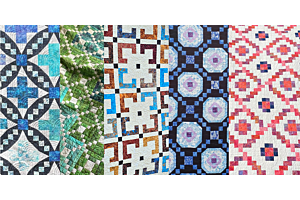
For centuries, quilting and sewing have been more than domestic tasks. They have served as powerful forms of expression—a tactile language through which women have woven their stories, identities and aspirations. As we explore this rich history, we celebrate quilting’s evolution from a necessity to a dynamic art form that continues to empower women and amplify their voices.
A Historical Timeline of Empowerment Through Quilting
When women's voices were often confined to the home, quilting became a means of self-expression, resistance and storytelling. Every stitch held meaning, every choice of color and pattern a reflection of identity and heritage. Whether quilts were sewn out of necessity or as an artistic endeavor, they became silent yet powerful witness to history, holding stories of love, hardship, joy and perseverance.
Quilting bees were more than gatherings for craft; they were spaces where women found solidarity, shared wisdom and offered support to one another. These circles, whether formal or spontaneous, were places where history was passed down, not through books, but through fabric and whispered conversations over a shared needle and thread.
1920s: Expressing Hidden Narratives Through Bold Improvisation
In the 1920s, quilting was an essential part of daily life—capturing family histories, cultural traditions and the resilience of its makers. In rural Alabama, the women of Gee’s Bend created quilts from scraps of fabric, not just for warmth, but as colorful expressions of art and the strength of community. Their bold, improvisational designs, spoke to creativity in ways the world would only later recognize as masterpieces.
Artist Spotlight: Annie E. Pettway


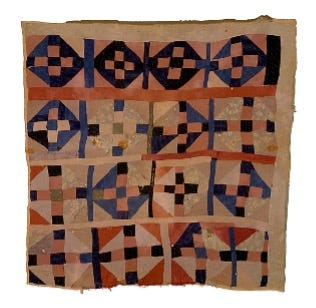

Annie E. Pettway, one of the celebrated quilters from Gee’s Bend, Alabama, transformed discarded fabric into geometric patterns with striking color contrasts. According to Souls Grown Deep, Pettway’s work reflects both the ingenuity required to work with limited materials and the deep cultural traditions passed through generations.
Her quilts are more than functional objects—they capture personal and collective histories, transforming simple fabrics into powerful expressions of identity. Today, Pettway’s work is recognized in major exhibitions and museums, ensuring the legacy of her art endures.
See more of Annie E. Pettway’s work here.
1950s: Domestic Craft as a Canvas for Personal Expression
During the 1950s, quilting remained primarily a domestic pursuit. However, women increasingly infused their work with personal symbolism, turning quilts into intimate records of life’s joys, challenges and cherished memories.
Artist Spotlight: Mary Lee Bendolph




Mary Lee Bendolph, another prominent Gee’s Bend quilter, emerged during the mid-20th century. Her work blended traditional quilting techniques with a uniquely expressive style. According to MoMA, Bendolph’s quilts reflect both functionality and artistic innovation, showcasing how everyday craft became a powerful medium for storytelling.
Through her bold compositions and use of salvaged fabrics, Bendolph stitched a narrative of resilience and self-reliance. Her legacy exemplifies how quilting, rooted in daily life, evolved into a long-lasting form of artistic and personal expression.
See more of Mary Lee Bendolph’s work here.
1980s: Narrative Quilts as Testaments to Lived Experience
By the 1980s, quilting had transformed into a medium for documenting personal histories and advocating for change. Women began using quilts to tell the stories of injustice, resistance and personal triumphs. Quilting became a medium for reclaiming narratives and making statements about gender, race and identity.
Artist Spotlight: Faith Ringgold




Faith Ringgold redefined quilting as a storytelling medium. One of her most iconic works, Tar Beach, combines fabric, paint and text to explore themes of memory, community and empowerment. Her quilt captures a child’s dream of flying over New York City, a metaphor for freedom and aspiration. Ringgold adapted the story of Tar Beach into a children’s book, which won a Coretta Scott King Award for Illustration and was named a Caldecott Honor Book.
Ringgold’s combination of quilting and narrative art challenges traditional boundaries between craft and fine art, cementing her influence in both the quilting and contemporary art worlds.
See more of Faith Ringgold’s work here.
2020s: Modern Voices Redefining Heritage and Identity
Today, quilting continues to evolve, merging tradition with modern innovation. Artists use fabric to explore themes of family history, feminism and social justice. Quilts now hang in galleries, telling stories of identity and the power of women’s voices.
Artist Spotlight: Laura Shaw




Laura Shaw’s quilt, Your Mother. Your Daughter. Your Sister. Your Grandmother. You. is a moving tribute to the strength and interconnectedness of women across generations. Through intricate patterns and thoughtful symbolism, her work celebrates the enduring legacy passed down from mother to daughter, sister, and grandmother—each patch a reminder of the power of shared experience. Your Mother. Your Daughter. Your Sister. Your Grandmother. You. was recently acquired by the International Quilt Museum in Lincoln, NE.
See more of Laura Shaw’s work here.
Artist Spotlight: Yvonne Iten-Scott




In Origin, Yvonne Iten-Scott explores themes of heritage and identity using fiber art techniques infused with a modern sensibility. Her work invites viewers to reflect on their roots and the transformative power of personal history, a reminder that quilting remains a relevant and necessary form of storytelling.
Continuing the Tradition of Empowered Voices
These contemporary works stand as both a continuation and reinvention of a storied tradition. Quilting is not just a preservation of the past—it remains a living, evolving medium for women to share their experiences, honor their histories and inspire future generations.
Quilting the Past into the Future
The evolution of quilting mirrors the broader journey of women’s empowerment—from silent domestic artistry to bold, public narratives. Today, quilts are celebrated not only as beautiful works of art but also as cultural documents chronicling shifts in gender, identity and society.
Artists like Laura Shaw and Yvonne Iten-Scott remind us that quilting is more than an art form—it is a language of legacy. Their work inspires us to honor the past, embrace the present and look forward to a future where every stitch continues to tell a story of resilience and creativity.
What stories do you see in the art of quilting? Share your thoughts and favorite quilt designs in the comments below!


